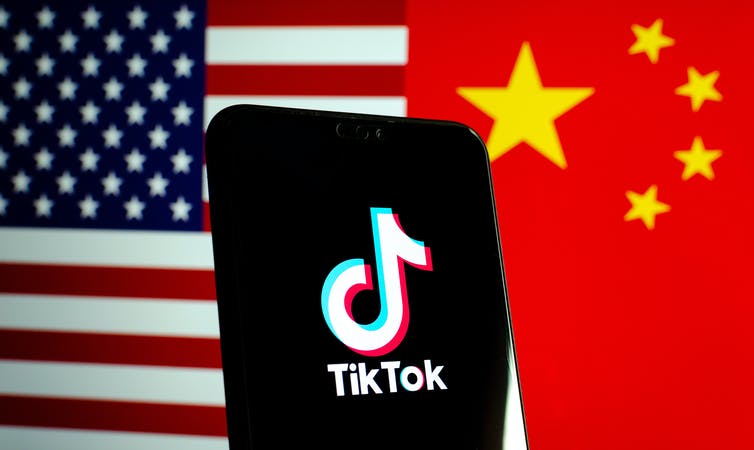FW
Mexico-based Tavemex, has become the second denim producer in the world to install a Monforts Eco Denim Line, and the first to use the technology for finishing denim fabrics of up to 300 g/sq. m. Tavemex completed installation of the Eco Denim Line early this year. The company now reports an 80 per cent reduction in water usage after one month of operation.
For Tavemex, the investment comes at a time of fundamental change for the company. Previously known as Tavex, the company was part of a multinational enterprise that originated in Spain and had denim-manufacturing plants there and in Morocco, Brazil and Argentina, as well as Mexico. Now, Tavemex is an independent Mexican-owned concern, with the US as its prime market.
Tavemex’s capacity is now 2 million mt. per month, and part of current production is gradually being moved from the existing stenters to the new Eco Denim Line. The equipment was delivered from Monforts in Germany via the manufacturer’s distributor in Mexico, Sattex-Mexico.
Talking about using less water, Arturo Ornelas Elizondo, Tavemex’s Industrial Director says the major reason for investing in the Eco Denim Line was to satisfy customers who have been requesting us, more and more, to use less water in dyeing and finishing. The company uses its own well for water, so cost is relatively low, and is saving more than 80 per cent on water usage.
Eco Denim Line is projected to save energy. The new installation includes a Monforts Eco Applicator, which applies the chemicals, replacing a conventional padder. This is said to reduce the drying needs and, therefore, energy consumption, due to the fact that the eco applicator applies less moisture to the fabric. On this Elizondo commented that this will further give the company a opportunity to improve our wastewater plant to the latest European standards.
HKL Magu, managing partner of Jyoti Apparels, has started work as the new Chairman of the Apparel Export Promotion Council (AEPC) for 2018-20. Before assuming charge as the chairman of AEPC, he was Vice Chairman of the Council. He took over from Ashok Rajani at the conclusion of the Council’s executive committee meeting.
With over 40 years of experience, Magu is a veteran of the apparel and textiles industry in India. He is one of the few who freely gave their time, devotion and allegiance for the growth of the industry. He has been instrumental in getting various incentives and subsidy schemes from the Central and State Governments.
Explaining his vision for the apparel industry, Magu says these are challenging times for the industry with global headwinds blowing over us. The industry has not been able to cope-up with the sudden dilution of DBK and RoSL rates and is still reeling under the adverse impact of the move. “The apparel sector has been recognised as one of the most important sectors for employment generation and for furthering the growth of the sector, our PM has given the ‘5F’ Formula - Farm to fibre; fibre to fabric; fabric to fashion; fashion to foreign, but 2017 has been an extremely difficult year for us and the export data of the last two months indicate a trend of declining exports. We are hopeful that in the new year the Government will extend the necessary support to the sector in the form of continuation old DBK rates and RoSL rates till June 2018 which would help us in making the Indian apparel industry the most competitive industry globally. Only then, the vision of our PM would be realised.”
Over a career spanning four decades, Magu has held various positions such as the President of Garment Exporters Association (GEA), Chairman of Finance & Budget sub-committee, AEPC and he has also served on the Board of Governors of Apparel Training & Design Centers (ATDC). He has been a recipient of Certificate of Merit from President of India for doubling exports during 1993-94 and has also served as the Member of the Grievance Committee of DGFT.
Marshal Cohen, Retail Snalyst at NPD Group says shoppers are placing a higher value on where their clothing comes from and how it’s made. They will even spend 10 to 15 percent more on ethically produced clothing. The younger generation, in particular, is willing to pay for the responsibility factor because they’re not buying as much stuff in the first place.
Patagonia has been leading the way by encouraging people to repair, reuse and consider the environmental impact of its apparel. In late 2016, it launched re-collection, an apparel line made from recycled fabric. Cory Bayers, Patagonia’s VP, Marketing says the brand is sold amazingly well so far and customers are more educated about materials, and this is the reason they are buying more of our products.
Patagonia also provides repair guides so people can get more mileage out of their clothes, and they also can send the company damaged clothing for free repairs or recycling. Students could bring garments, regardless of brand, to a vintage wooden camper truck for repair. Transparency is being adopted by ecommerce sites as well. Take Everlane for example, for every piece of clothing sold on its site, Everlane lists the materials, hardware, labor and transportation costs, and provides info on production, including photos of the workers and factory floors in China where yarn is spun or silk is woven. Michael Preysman, CEO and Founder of Everlane says, people are more aware how clothes are made today because of social media, and, as a result, they know what the dark side is.
Mainstream brands like New Era, which recently launched a cap for NBA’s Portland Trail Blazers made with recycled plastic bottles, also are embracing the trend. People have a lot of hats in their closet, so when they’re purchasing another one, it really helps that materials are making a difference says Chi-Kay Lam, Senior Category Manager, at New Era.
According to Marshal Cohen, retail analyst at NPD Group the current trends in food consumption, shoppers are placing a higher value on where their clothing comes from and how it’s made. They will even spend 10 to 15 percent more on ethically produced clothing.
The younger generation, in particular, is willing to pay for the responsibility factor, because they’re not buying as much stuff in the first place says Cohen.
Patagonia has been leading the way by encouraging people to repair, reuse and consider the environmental impact of its apparel. In late 2016, it launched re-collection, an apparel line made from recycled fabric.
Cory Bayers, Patagonia’s VP of marketing commented that the brand is sold amazingly well so far and customers are more educated about materials, and this is the reason they are buying more of our products.
Patagonia also provides repair guides so people can get more mileage out of their clothes, and they also can send the company damaged clothing for free repairs or recycling. Students could bring garments, regardless of brand, to a vintage wooden camper truck for repair.
“ One of those brands is ecommerce site Everlane. For every piece of clothing sold on its site, Everlane lists the materials, hardware, labor and transportation costs, and provides info on production, including photos of the workers and factory floors in China where yarn is spun or silk is woven.
Michael Preysman, CEO and founder of Everlane says that people are more aware how clothes are made today because of social media, and, as a result, they know what the dark side is.
Further PACT organic makes its underwear, T-shirts and dresses from organic cotton, which uses 71 percent less water and 62 percent less energy than conventional cotton, and its products also are produced in safe working conditions that pay living wages, with no child labor. PACT logged $500,000 in sales in 2011, and is expected to hit $20 million this year.
Mainstream brands like New Era, which recently launched a cap for the NBA’s Portland Trail Blazers made with recycled plastic bottles, also are embracing the trend.
People have a lot of hats in their closet, so when they’re purchasing another one, it really helps that the materials are making a difference says Chi-Kay Lam, senior category manager, brand partnerships at New Era.
Textiles India will be held in Gujarat from June 30 to July 2, 2017. This will be a mega trade event for the textile and handicraft sectors, showcasing the entire range of Indian textile products from farm to fiber to fabric to fashion.
Textiles India 2017 will also provide an opportunity to participants to hold B2B meetings with around 2500 international buyers, international and Indian exhibitors, and 15,000 Indian buyers. Over 33 round-tables will also be held on issues of concern for the various segments of textiles and handicrafts with prominent international speakers and industry leaders.
The three-day event will also include global conferences on the last day with six different themes related to the textile sector. Textiles India is the first ever global B2B textile and handicrafts event in India. It holds the promise of becoming a landmark annual trade event for the Indian textile and apparel industry at the global level. It is celebrating the significant achievements of India's textile industry and the enormous promise of spectacular growth over the next few years.
India’s textile sector is a major contributor to overall industrial production, exports and employment. The textile sector is also rising on the new digital wave with players vying with each other to grab a higher share of online fashion.
In the past two years, Egypt has taken measures to restore seed purity and cotton quality. Egyptian cotton’s reputation and quality had deteriorated significantly due to the seed companies’ lack of effective quality assurance systems that resulted in inferior, mixed-variety output.
Egyptian cotton’s length, strength, firmness, color, trash count and maturity have all improved in 2016-2017 compared to 2015-2016. This development has increased demand and the prices for Egyptian cotton in local and international markets. Egypt’s cotton exports jumped 63.9 per cent during the first quarter of the planting season of 2016-17.
Internationally, retailers have begun to more closely monitor their products labeled as 100 per cent Egyptian cotton, many requiring manufacturers to provide attestation for products labeled as such. About 90 per cent of global supplies of Egyptian cotton last year were fake.
In an effort to crack down on fraudulent practices and ensure quality, the Cotton Egypt Association started licensing the use of the Egyptian cotton logo to suppliers and manufacturers all over the world. Carrying the logo means that the association certifies the authenticity of the Egyptian cotton. If Egypt’s cotton industry returns to its previous glory, the economy would flourish, the spinning and textile industries would boom, and stalled factories would reopen.
Australian Wool Innovation is set to undertake a major strategic research direction change to address rapidly rising wool harvesting costs. Only about 10 per cent of AWI’s annual harvesting investment portfolio is currently spent on alternatives to manual shearing and in-shed sheep handling. Shearing costs are rising faster than efficiency gains from in-shed shearer training.
AWI also wants to use savings achieved in a recent round of staff redundancies to explore alternatives to the manual shearing of sheep. Additional research in wool harvesting could involve combining robotic, chemical and previous platforms or chain shearing technology to provide cost-saving in-shed alternatives for growers and shearers.
AWI will look at some of the industry’s bigger problems, such as the issue of shearing heavier sheep efficiently and safely. Shearing costs continue to rise while increasing numbers of growers are shearing sheep twice a year or every eight months to assist cash flow, minimise flystrike and cut crutching costs.
More than 80 potential harvesting technologies have been assessed by AWI, identifying promising areas for development including hand piece technology, parallel, modular, upright shearing platforms and alternative shearing technologies.
The aim is to find a replacement for manual shearing like robotics, laser and deal with the cost of shearing.
Pakistani markets are awash with low-cost Chinese products. What is significant from Pakistan’s perspective is that China is fast developing Xinjiang into a major textile exporting hub. Xinjiang is China’s top cotton-growing area, producing between three to four million tons, or 60 per cent of the seven million tons of cotton produced by China.
China is already Pakistan's major competitor in global trade, particularly in the textile and garment segments, and with the establishment of a textile park in Xinjiang, its textile exports are anticipated to increase manifold. The textile park in Xinjiang will be a heavy blow to Pakistani textile exports. Already being high value added and low in cost due to high technology, superior production efficiency, subsidised manufacturing and cheap labor, China’s textile exports from Xinjiang passing through CPEC to the Middle East-North Africa region will experience a further reduction in costs in terms of transportation.
On the other hand, Pakistan’s exports are already facing a decline in global markets owing to a host of factors, two of which are high production costs and lack of incentives in the sector. Although a $1.7 billion textile package has recently been announced by Pakistan, it is no match with the incentives provided by China to textile exporters in Xinjiang, and Pakistan will not be able to compete with Chinese exporters.
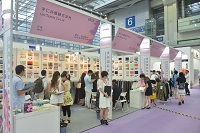
As a part of Messe Frankfurt’s renowned Intertextile brand, Intertextile Pavilion at the Shenzhen International Trade Fair for Apparel Fabrics and Accessories (Intertextile Pavilion Shenzhen) has a distinctive focus on the South China market, benefitting from this region’s promising market conditions and providing huge opportunities for exhibitors at this year’s fair.
Given its solid industrial bases and favourable geographic locations, the South China region is at the heart of China’s garment industry. Moreover one of its two major cities, Shenzhen, has a reputation as the nation’s garment and fashion capital. Currently, the city houses over 2,000 garment companies, 30,000 fashion designers and more than 1,000 fashion brands. In 2016, total sales from the Shenzhen garment industry exceed 200 billion RMB, accounting for over 60 per cent of the market of shopping malls in China’s Tier I cities. As per Hong Kong Trade Development Council’s study ‘China Garment Industry’, with growing spending power, these two markets are projected to continue their strong growth. While men’s garments segment is seeing growth with retail sales expected to grow at a compound annual rate of 11.8 per cent between 2015 and 2020, some domestic women’s wear brands have started forging into the mid-range to high-end women’s garment segments. The research also stated most enterprises which own women’s garment brands such as Ellassay, Marisfrolg, Yinger and Koradior, are located in South China.
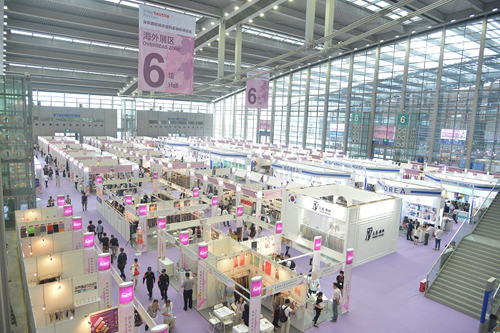 Positive exhibitor experience
Positive exhibitor experience
Showcasing this positive data are testimonies and insights shared by overseas exhibitors at last year’s Intertextile Pavilion Shenzhen. As Hiroshi Kawabata, Sales Manager – International Sales Department of Japan’s Sunwell says they see the strong potential in South China market because this is the hub for ladieswear. Given the large population in China, this market is stable and demand will continue to grow. John Lee, Director–Exhibition Project Division of Korea Pavilion’s organiser DGTIA points out, “Shenzhen is a fast-growing city being a Special Economic Zone. More than 3,000 garment factories are located here, which creates enormous demand for apparel fabrics and accessories.” Moreover, Taiwan Pavilion’s organiser Taiwan Textile Federation (TTF) conducted its own research on the South China fashion market and found, “more than 75 per cent of fashion brands in South China are keen to purchase high-quality overseas products,” Petra Peng, representative of TTF explained.
Meeting point for high quality buyers
Along with favourable market conditions the fair’s ability to attract high quality buyers is also a key factor. In 2016, visitor numbers jumped 15 per cent to 17,019 buyers from 36 countries and regions, easy commuting distances between Hong Kong and other major cities in Southern China ensured numerous international and domestic fashion brand buyers such as Brooks Brothers, Combi, Descente, Diesel, etc, utilised the fair as their key sourcing platform in the region.
As Diesel’s senior merchandiser (Knit – R&D) Janice Liu observes, “The date of the fair is good for our sourcing because brands like us are always developing new products and consistently sourcing new materials at different time of the year. Therefore, although we also attend the Shanghai fair (Intertextile Shanghai Apparel Fabrics), this fair is still very important for us. We did find some potential overseas and domestic suppliers this time.” Hong Kong ladieswear brand Kinji’s fashion designer Wing Cham agrees and says, “The fair is close to Hong Kong and covers a good range of products, so I plan to invite my boss to come with me next time.”
Country pavilion added attractopm
The 2017 edition of Intertextile Pavilion Shenzhen will be held from July 6 to 8 in Halls 6, 7 and 9 of the Shenzhen Convention & Exhibition Center, with some key country and region pavilions set to return to feature an array of high-quality fabrics for ladieswear, casual wear, lingerie & swimwear and suiting, the latest knitting fabrics, as well as accessories, lace & embroidery, and yarns & fibres. Among these are:
Korea Pavilion: Organised by Korea Fashion Textile Association (KFTA) and Daegu Gyeongbuk Textile Industry Association (DGIA), will showcase a variety of knitted and man-made fabrics for ladieswear, as well as functional fabrics
Taiwan Pavilion: Organised by Taiwan Textile Federation, will feature the latest collections of lace & embroidery and knitted fabrics
Fine Japan Zone: Formed by leading Japanese companies to highlight Japanese-quality cotton and man-made fabrics for ladieswear as well as casual wear with small order quantity
Shengze Pavilion: Representing the Eastern Silk Market from Suzhou, China, will display an array of man-made and silk-like fabrics for ladieswear.
The fair will also have valuable opportunities to learn next year’s trends through the Spring/Summer 2018 Trend Forum in Hall 9, and a series of seminars during the first two days. Together with Intertextile Pavilion Shenzhen 2017, the 17th China International Fashion Brand Fair – Shenzhen (halls 1 & 2) and a fashion show (hall 5) are held concurrently from 6 – 8 July in the same venue.
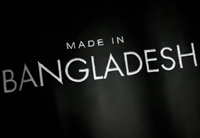
Bangladesh clothing manufacturers are facing tough times demanding fair price for clothing supplied by them. Additionally, they are in tremendous pressure from global buyers to improve conditions at workplace, after the Rana Plaza building collapse in 2013. Local apparel makers say, over $1 billion has been invested so far to renovate and retrofit their factories as per the demand of Western buyers, retailers and brands. Yet, retailers and brands have not increased the price. Buyers are still paying the traditional low prices for products and earning huge profits. A shirt costing $3 or $5 is being sold between $25 and $30.
The same is the case with high-end value added products, which is 30 per cent of the total volume of garment items exported per annum from Bangladesh. MNCs pay between $8 and $12 to local manufacturers for purchasing a piece of value added high-end shirt and retailers sell the same shirts at $100 sometimes even at $150, garment makers said. According to manufacturers and economists, the faulty global supply chain is to be blamed. Economist Rehman Sobhan, highlighting this very point says the current business model forces suppliers to squeeze their workers as much as they can because they have to produce the shirt at $5. There needs to be investigation into this matter to resolve issues faced by manufacturers.
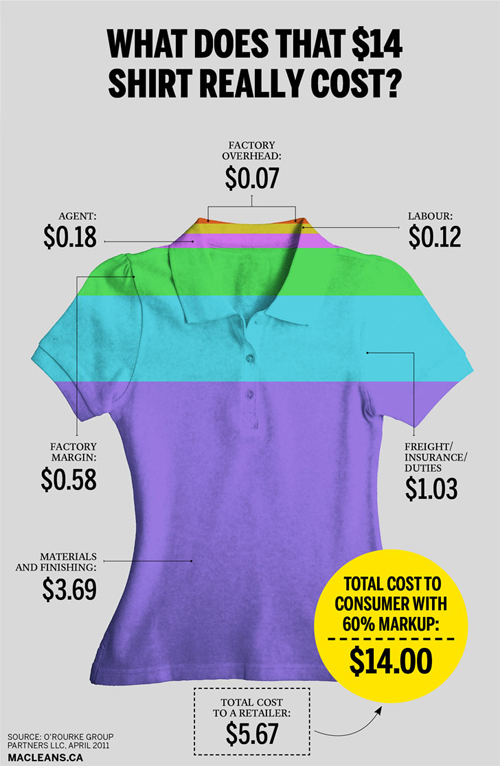
The Western view
Offering another perspective, European brands say brands and store owners also do not always make profit as they can sell the highest 60 per cent of the items at tagged prices. Of the remaining 40 per cent, 20 per cent are sold at discount prices and the rest 20 per cent are sold at clearance outlets or donated. Mahmud Hasan Khan Babu, VP, Bangladesh Garment Manufacturers and Exporters Association, too echoed the view of the merchandiser. Retailers have the target to sell 75 per cent of the RMG items at tagged prices and the rest are sold at discount prices. Moreover, the companies annually pay millions of dollars to high-ups, he said. Internal unhealthy competition among manufacturers is also responsible for low prices.
Need of the hour
There needs to be an end to such a plight of manufacturers. The low price of garments will continue until manufacturers say no to it. Retailers are getting the products at lower prices because manufacturers are ready to supply them products at the said price point, opines Kutubuddin Ahmed, Chairman of Envoy Group, which exports garments worth a millions dollars every year. Bangladesh should manufacture high-end items apart from basic items for receiving higher prices.
Trade analyst say, apparel exports is buyer-driven and global brands dictate the market. If producers can come to an understanding they will sell a certain product at certain price, they can get a fair price. But that doesn't happen due to intense competition. There are efforts at the international level to bring global brands under the fair trade system but it is not working well. Also, some trade unions and NGOs are trying to set a standard on Asian wage level for apparel workers and if it can be set, producers will get higher prices.








